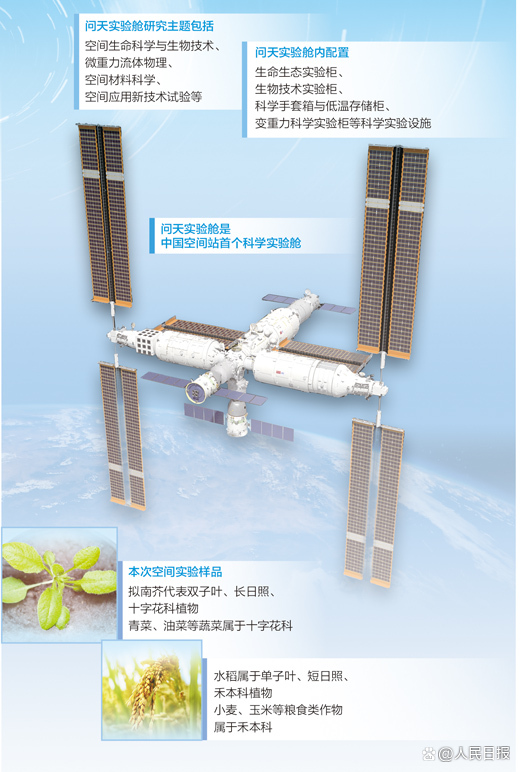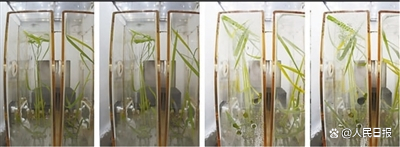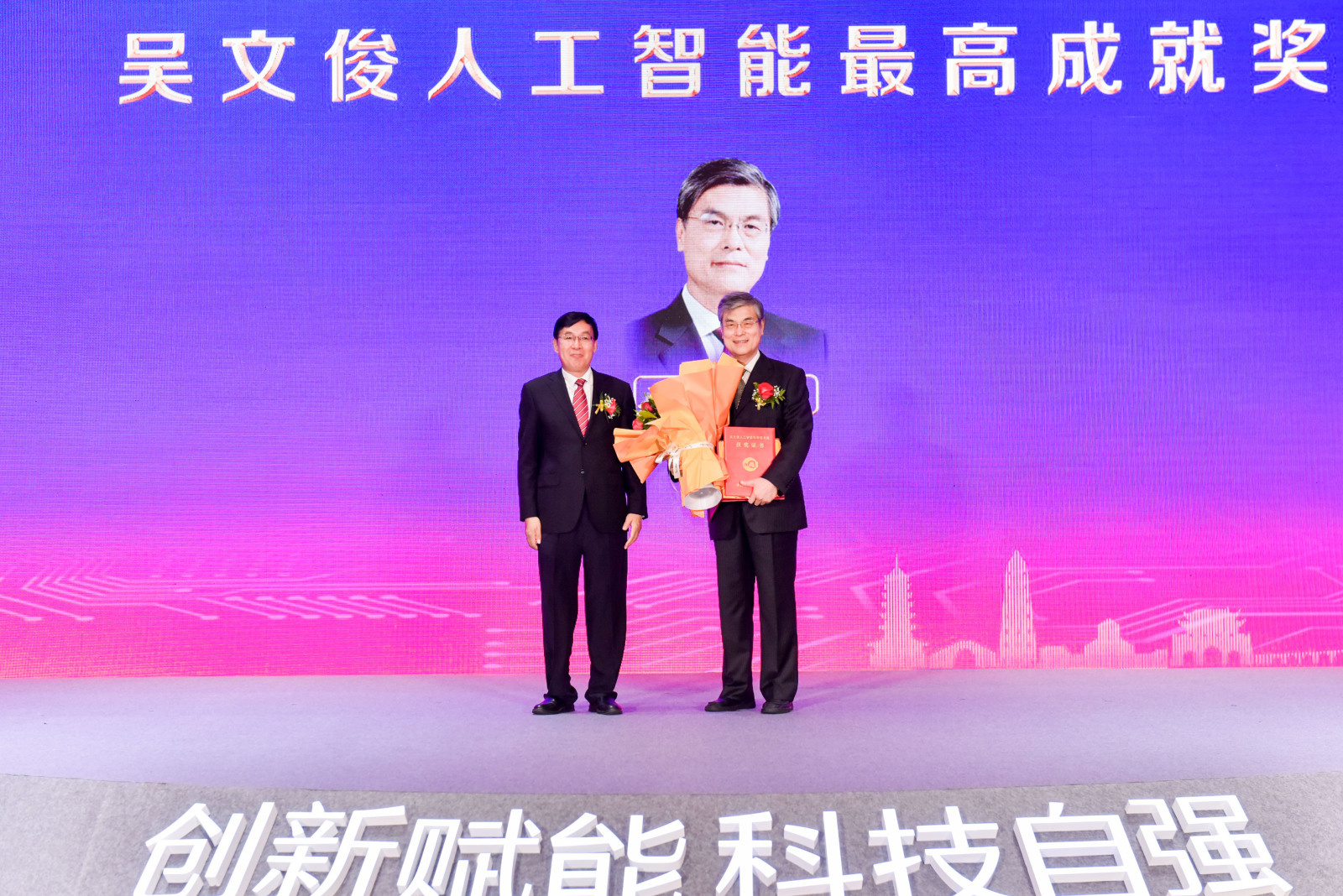Plants in China Space Station
Author:People's Daily Time:2022.08.30


Ask the growth and development of rice under the condition of the micro -gravity in the experimental cabin. Photo Conferry of Molecular Plant Science Innovation Center of Chinese Academy of Sciences
Core reading
On July 24, the first scientific experimental compartment of China Space Station asked Tian Tiangan experimental cabin to enter space. Subsequently, the experimental units containing experimental samples and rice seeds officially launched the experiment. This is also the first time in the world for the cultivation research on the entire life cycle of "from seeds to seeds" in the space station. One month has passed, what is the growth of plants in the space station? How does micro -gravity affect plant flowering? These discoveries will provide guidance for the production of grain crops that meet the requirements of more space life protection.
On August 29th, the introduction of the stage of phase of space engineering space application and space station high -plant training experiments was held in Beijing and Shanghai.
On July 29, experimental units containing experimental samples of southern mustard seeds and rice seeds officially launched the experiment at the China Space Station. This is also the first time in the world for the cultivation research on the entire life cycle of "from seeds to seeds" in the space station.
Today, one month has passed. What is the growth of these namura seeds and rice seeds? According to reports, as of now, the effective load status of the Tiantian experimental compartment is good and the work is stable. Experimental units containing experimental samples of southern mustard seeds and rice seeds have been installed from the life ecological experimental module of life compartment that have been installed to the experimental compartment. At present, plants have germinated and growing.
Explore how the micro -gravity affects and controls the flowering of plants
At the space station, the biggest challenge facing plants is a micro -gravity environment.
Zheng Huiqiong's research team of the Chinese Academy of Sciences Molecular Plant Science Innovation Center (hereinafter referred to as the "Molecular Plant Excellence Center") has undertaken the life science experiment project of "molecular mechanism for high -level plant flowering regulation".
Zheng Huiqiong said that this experimental project will focus on three key scientific issues: how does micro -gravity affect flowering? What is the molecular mechanism that affects the flowering of plants? Can it be used to control the flowering of plants with a micro -gravity environment?
"Blossoming is the prerequisite for plants to produce a new generation of seeds. The seeds of crops are both grain and the carrier of breeding the next generation. To truly solve the problem of food guarantee for human long -term space exploration, these basic explorations are essential." Zheng Huiqiong said.
In fact, since the launch of the first artificial earth satellite in the 1950s, how to use plants to ensure the food, oxygen and pure water required for human survival in the outside world has become the most concerned issue for space life sciences.
At present, the research of scientists has gradually expanded from the research on plant seedlings to seed production research. However, only a few crops of rapeseed, wheat and peas have completed the experiment from seeds to seeds in space to seeds. At the same time, under the conditions of space, problems such as delayed flowering time, low number of flowers, low seeds, and decreased seed quality have not been solved. Therefore, it is urgent to study the key link of how to control the development of plant -flowering control mechanisms to provide guidance for improving the production of spatial plant cultivation technology and exploring more grain crops that meet the requirements of life protection.
Highly stalk rice seedlings have grown to about 30 cm
On July 28, experimental units containing experimental samples and rice seeds were installed from a space staff to the life ecological experimental module of the experimental compartment, injecting instructions through the ground program, and the experiment was launched on July 29th. Essence "Subsequently, the astronauts carried out water injection of Arabida mustard and rice seeds, and began to experiment on track. The temperature, humidity, and light control were normal." Multiple leaves are grown, high -straw rice seedlings have grown to about 30 cm, and low -straw rice is also 5-6 cm. The growth state is good. "
This space experimental sample Arabia and rice are two models of plants. Arabiastone represents Gemini, long sunshine, cross flower plants, vegetables, rapeseed and other vegetables belong to the family. Rice belongs to single -leaf, short -day photos, and grasses, and grain crops such as wheat and corn belong to the family.
The scientific research team stated that subsequent experiments of Arabia must also complete the whole life cycle of "from seeds to seeds" in space and rice. During the experiment, astronauts collected samples and frozen preservation, and finally returned to the ground with astronauts to analyze. "Our plan is to collect seeds 10-15 days before the astronauts returned, and the astronauts brought back when they returned." Zheng Huiqiong said.
Zheng Huiqiong said: "I hope that through this study, the cultivation experiments from the whole life cycle of rice 'from seeds to seed' for the first time in the international micro -gravity conditions in the world and obtain key environmental parameters of rice training. The influence of rice growth and molecular basis, use of rice to provide important theoretical guidance for spatial grain production. "
At the same time, the research team hopes to compare the two models of Mimi and rice through the transcription group, and the expression of key genes in the space environment and the changes in their regulatory networks can be analyzed. The molecular mechanism of flowering provides theoretical basis for further creating crops and development and utilization of space micro -gravity environmental resources.
Ask the Tiantian experimental cabin load status in good condition
At 14:22 on July 24th, I asked the Tianyan Experimental Class to successfully launch at the Wenchang Aerospace launcher in my country. Qi Tian's experimental cabin is the second cabin section of China Space Station, and it is also the first scientific experimental cabin with a scientific experimental cabinet such as life ecological experimental cabinets and biotechnology experimental cabinets. Zhao Liping, a researcher at the Space Application Center of the Chinese Academy of Sciences and the manned space engineering space application system, introduced that as of now, the valid load state is good and the work is stable.
"The initial status of the scientific experimental cabinet, the basic function test is normal, and the rail test is carried out in an orderly manner; the scientific experiment project with the cabin is carried out on the orbit experiment as planned; the space environment guarantee is timely and powerful; the ground system is operating efficient and stable; the subsequent work arrangements Promoting orderly, "Zhao Liping said.
Zhao Liping introduced that on July 28, astronauts completed the universal biological training module of the life ecological experimental cabinet unlock, status settings, radiation measurement module and plant training unit installation. On August 8th and August 12th, astronauts completed the unlocking and assembly of gravity scientific experimental cabinets, scientific glove boxes, low -temperature storage cabinets, and biotechnology experimental cabinets. After the assembly is completed, the gravity scientific experimental cabinet, scientific glove boxes, and low -temperature storage devices have carried out the established rail test content. Through downward remote test data and engineering data judgment, the relevant scientific experimental cabinets and scientific experimental systems work normally and the load status is good.
After the launch of the experimental compartment, the space environment guarantee division system monitor the changes in the space environment 24 hours. According to the current space environment monitoring data analysis, the current level of solar activity is extremely low to low, and geomagnetic activity is mainly based on calm to micro -disturbance, which is conducive to the development of various schedules in the space station.
Qi Tian's experimental cabin provides more space and possibilities for scientific experiments for scientific researchers in space. Han Bin, an academician of the Chinese Academy of Sciences and the director of the Molecular Plant Excellence Center, said: "Now that I have asked the experimental compartment for a longer period of time, it can cultivate plants for a longer period of time, which provides us this time. How can seeds grow under the condition of micro -gravity and closed conditions. "
- END -
The 2021 Wu Wenjun Artificial Intelligence Science and Technology Award was released!Academician Pan Yunhe won a million prize

On July 16, the award ceremony of the highest award of the Wu Wenjun Artificial In...
For the first time, scientists discovered the "dormant" black hole outside the galaxy
Xinhua News Agency, Beijing, July 21 (Reporter Zhang Ying) The Southern Observatory recently issued a bulletin saying that a research team composed of multiple national scientists observed a sleep b